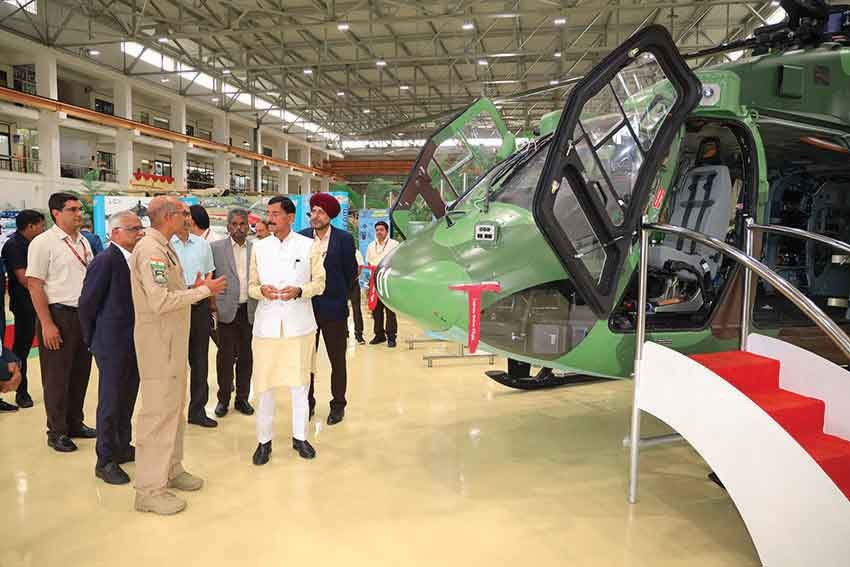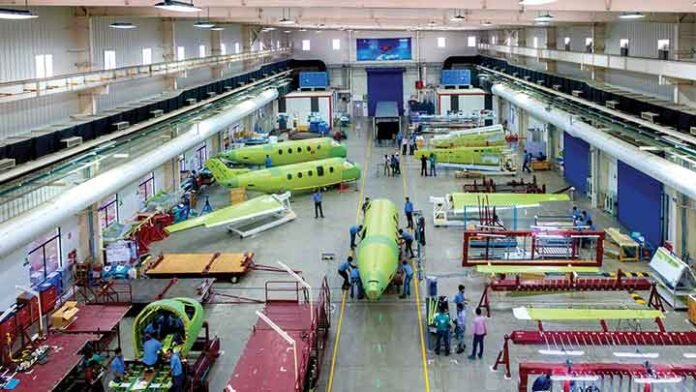The last decade has seen several bold initiatives by the government for achieving self-reliance in defence. These include embargoes on imports of key equipment and components, earmarking funds for procurement from domestic sources, easing of procurement procedures, establishing defence corridors and a host of other measures calculated to encourage domestic manufacturing. Efforts were also made by the defence public sector undertakings (DPSUs) like Hindustan Aeronautics Limited (HAL) to expand the ecosystem of domestic suppliers for some of their major products. An open system like the Innovations for Defence Excellence (iDEX) initiative was created to promote product innovation by entrepreneurs and firms and given liberal financial support. Offset rules were also streamlined to enable the domestic industries to benefit from the import of major equipment.
While undoubtedly there is a lot of buzz in the domestic defence industry, making defence firms the hot favourites of the stock market, the true impact of these policy measures is yet to be evaluated objectively to enable the government to make corrections and interventions wherever necessary. Although the private sector has ventured into the design and manufacture of artillery guns, armoured cars, light tanks etc, it doesn’t seem to be getting real opportunities to manufacture more complex platforms like aircraft (with the exception of the Tata Airbus project which is essentially driven by the Original Equipment Manufacturer (OEM), submarines, helicopters etc. Their involvement and leadership in such major projects is essential for spurring innovation and ecosystem building.
The DPSUs, which are the main beneficiaries of domestic sourcing, are very protective of their interests and sometimes do not hesitate to use their clout to eliminate the private sector from major projects. The risk-averse defence bureaucracy makes matters easier for the DPSUs. But the fact remains that the DPSUs lack the flexibility and motivation to hire the best talent available to address technological challenges the only means by which the barriers of technology could be broken to achieve self-reliance. The DPSUs have plenty of accumulated experience but their freedom to act decisively is still in chains.
Take for instance the P75I project for building submarines with an Air Independent Propulsion (AIP) system, the contract for which is likely to be awarded soon. This was initiated under the strategic partnership policy originally meant for engaging the private sector exclusively in major projects. But probably sensing that there was only one private sector company capable of building submarines and that the bidding would eventually become a single tender process, the policy was diluted to allow the Mazagaon Dock Shipbuilders Ltd (MDL), which virtually has a monopoly in submarine building, to enter the fray.
Although the private sector has ventured into the design and manufacture of artillery guns, armoured cars, light tanks etc, it doesn’t seem to be getting real opportunities to manufacture more complex platforms like aircraft (with the exception of the Tata Airbus project which is essentially driven by the Original Equipment Manufacturer (OEM), submarines, helicopters etc
Finally, after a protracted process, the MDL-Thyssenkrupp combination seems to have emerged as the front-runner. It may be that they have a credible AIP that works. But the fact remains that one of the most vibrant private companies in India, long associated with key domestic submarine programmes and having the capability even to design small submarines, has lost the opportunity to develop a robust ecosystem and contribute to credible self-reliance. Unfortunately, the MDL’s long association with submarine manufacturing has not really made a dent in technological self-reliance. Even today, dependence on foreign manufacturers for critical technologies is quite visible.
At the policy level also, there is the problem of blinkered vision. A fragmented approach is not helpful in grappling with the massive challenge of attaining full self-reliance. The vision has to be wider and deeper to gain a holistic view of defence manufacturing so that technology gaps in all services could be identified and well-coordinated efforts made to close the gaps. With a Chief of Defence Staff (CDS) at the helm of inter-service coordination, such an exercise should have been carried out by now. Operation Sindoor has also highlighted the need to leverage new technologies for gaining an edge on the battlefield.
We also need advances in drone manufacturing, air defence, space-based warfare, cyber warfare, cyber security, quantum communications etc. This only means that the task of developing cutting edge technologies needs to be accomplished within specific time horizons. Often the time factor is totally disregarded and mission mode projects are scarcely undertaken. Take the aero-engine for instance. A project of such strategic dimension has not received the attention it richly deserves. After the Kaveri engine project came to a grinding halt nearly a decade ago, we have not seen diligent and determined efforts to mobilise talent and technology to develop the aero-engine indigenously.
The recent news that the Defence Research and Development Organisation (DRDO) is thinking of inviting the private sector to develop the low pressure compression system of the engine, is welcome, but one question remains. Were they using imported components in the Kaveri Engine? Reports about the French company Safran joining hands with the DRDO to develop a new engine, if true, are certainly out of sync with the concept of ‘Aatmanirbharta’. If such a project is in the pipeline, it is necessary for the government to study critically the nature of the technology transfer that is promised.

India needs most critically the technology for the ‘hot part’ of the jet engine. Are we going to get the technology to produce the high performance super alloys within the country? Or will the OEM supply these materials—in the name of technology transfer—for assembly within India? The Advanced Medium Combat Aircraft (AMCA) is another unfulfilled dream which has been waiting to happen for more than two decades now. Here also, the failure to build a strong foundation for aircraft manufacturing in the private sector has affected our progress. The fighter jet procurement programme which was initiated nearly a decade ago has not made much headway. Had it taken off, India would have acquired the capability to graduate to the design and manufacture of a stealth fighter. One of the likely scenarios is the domestic manufacture of the Rafale fighter by its OEM Dassault. But if the Make in India process is led by the OEM, the government has to make special efforts to see that scores of domestic firms are involved in it. Otherwise, a major opportunity for private sector capability building will slip through our fingers.
It may be that the MDL-Thyssenkrupp combination has a credible AIP that works. But the fact remains that one of the most vibrant private companies in India, long associated with key domestic submarine programmes and having the capability even to design small submarines, has lost the opportunity to develop a robust ecosystem and contribute to credible self-reliance
In order to close technology gaps quickly, India may have to launch a defence technology mission with clear timelines involving the private industry, public institutions, universities and leading research laboratories as active partners. Leading private sector companies which have made a mark in defence manufacturing should be inducted as strategic partners. Each project should be led by world-class technologists with proven track record. Such a mission should be funded liberally by the Ministry of Defence (MoD) and the Anusandhan National Research Foundation (ANRF). The government also needs to scout for Indian talent abroad. The H-1B visa crisis should become a great opportunity for us to reverse brain drain and bring in world-class talent.
Unless we have a clear roadmap for technological self-reliance, it will be difficult to attain true strategic independence and free ourselves from the stranglehold of foreign defence manufacturers. Is such a holistic roadmap available with the MoD? This roadmap should necessarily include the revamping of the DRDO which has under-performed in many critical areas—the aero engine being the prime example. But the reform process which was initiated has not moved forward. We cannot afford to lose more time. We have miles to go before we sleep.





